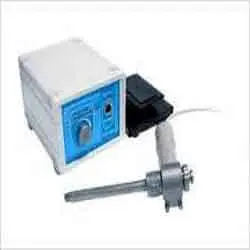 Proponents and opponents of a surgical tool used for a common gynecological procedure will face off next month at a Food and Drug Administration (FDA) hearing about whether the power morcellator should remain on the market.
Proponents and opponents of a surgical tool used for a common gynecological procedure will face off next month at a Food and Drug Administration (FDA) hearing about whether the power morcellator should remain on the market.
The power morcellator is used in uterine fibroid surgery and in about 50,000 minimally invasive hysterectomies annually, the Wall Street Journal reports. The morcellator slices up tissue so it can be extracted through tiny incisions. But in April, the FDA issued a safety communication discouraging gynecologists from using the tool, because the procedure can spread a cancerous tissue in a woman’s abdomen, reducing her long-term survival rate. The FDA estimates that 1 in 350 women undergoing such treatment has a hidden cancer.
Opponents say the risk of spreading cancer makes the device too dangerous, especially for elective fibroid procedures for which there are alternatives, according to the WSJ. Margaret Jacobson, a doctor and hospice director in Bellingham, Washington, plans to argue for a ban at the FDA meeting. Her sister died last year at 55 after a morcellator was used during her hysterectomy. She had been diagnosed with fibroids but it turned she had cancer.
William Maisel, deputy director for science and chief scientist at the FDA’s Center for Devices and Radiological Health, said there is “no reliable way” to determine if a uterine fibroid is cancerous prior to removal and this is why the FDA is discouraging the use of power morcellators, according to Law360.
Proponents call for an approach that balances the risks and benefits. Gynecology groups plan to argue that when appropriate patients are carefully selected, the morcellator remains a valuable tool, allowing for a less invasive surgery. Hal Lawrence, of the American College of Obstetricians and Gynecologists, says that women under 35, for example, have an extremely low chance of having uterine cancer masquerading as a fibroid, according to the WSJ.